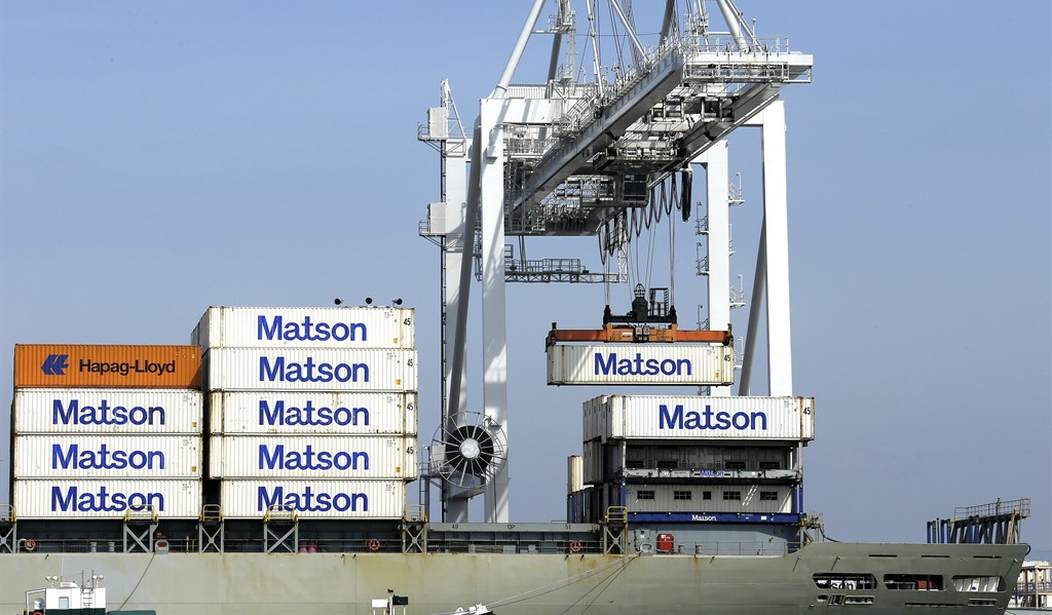To win the presidency, Donald Trump must overcome skepticism among many voters about his positions on free trade, immigration and many other issues. On trade, that is hardly an insurmountable task.
Lowering tariffs and other barriers to international commerce better permits businesses and workers to specialize at the activities they do best.
The U.S. electronics industry understands this. It keeps at home product design, software development and sophisticated microprocessors but outsources to Asia simpler components and assembly for items like cell phones and laptop computers.
Americans would get richer if sales of U.S. products abroad approximately equaled imports, because workers in exporting industries are nearly 11 percent more productive than those competing with imports.
Sadly, the trade deals we have signed—ranging from the comprehensive agreements administered by the World Trade Organization to bilateral pacts like the 2012 free trade agreement with Korea—have not worked out that way.
In 2015, U.S. foreign sales totaled $2.3 trillion and that permitted Americans to buy a like amount of foreign goods and services. The resulting productivity gains from specialization lifted U.S. GDP by some $240 billion.
However, Americans purchased even more foreign goods and services—$2.8 trillion. The resulting $529 billion trade deficit destroyed 4 million jobs that were not replaced by exports and that overwhelmed the gains from trade.
On net, lost demand for U.S.-made goods and services directly reduced GDP by $289 billion and another $170 if we count in lost spending by idled workers and shuttered businesses.
The cumulative effects of persistent trade deficits are even more devastating.
Recommended
Americans have to borrow from foreigners or sell U.S. real estate, intellectual property and businesses to finance the trade gap. For example, the more than $1.2 trillion in U.S. Treasury securities held by the Chinese and the sale of GE appliance business and other private American corporate assets to the Chinese.
Much of the lost business activity and ownership is in manufacturing—that sector supports a lion’s share of R&D spending. Year after year, the resulting lost investments in new and improved products reduces annual economic growth by about one third.
As a former U.S. trade official, I know our negotiators work hard to ensure new trade agreements create at least as much in new exports as additional imports but too many of our trade agreements simply don’t measure up.
Bill Clinton negotiated a deal that permitted China to enter the WTO in 2001 and liberalized bilateral trade, but as implemented the arrangement is hardly fair or balanced. China’s average tariff on imports is 9.6 percent, whereas the U.S. average levy is 3.5 percent.
Particularly important, foreign governments often push down the value of their currencies against the dollar to make their exports cheaper on American store shelves and U.S. products artificially more expensive in their markets.
According to the World Bank, if China’s currency were trading at a rate that actually reflected the cost of buying goods and services in China, it would cost 3.5 yuan to purchase 1 dollar but instead it costs about 6.7.
American businesses face similar problems with other major trading nations such as Japan, South Korea and Mexico but with globalized supply chains and the benefits Americans enjoy from fairly-traded imports, no one wants to turn to blind protectionism and shut down trade.
Instead, the next president should renegotiate and better enforce existing agreements to ensure more balanced trade. That would boost exports, redirect U.S. consumer demand to American factories, substantially increase GDP growth and tax revenues, and reduce budget deficits.
China accounts for about two-thirds of the U.S. trade deficit but has proven particularly recalcitrant in bilateral talks to revalue its currency or ease other trade tensions.
Just like Donald Trump in the primaries, Mitt Romney campaigning in 2012 and Noble Laurette Paul Krugman have suggested a big tariff to bring China into serious discussions. Seen in the context of getting better terms—for example, lowering Chinese tariffs and revaluing the yuan—this is really a pro-free trade position and consistent with long held Republican goals.
It’s really just a matter of being realistic about the objective—growing the economy and getting a better deal for American businesses and workers.
























Join the conversation as a VIP Member